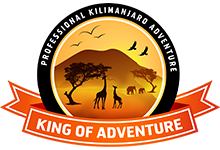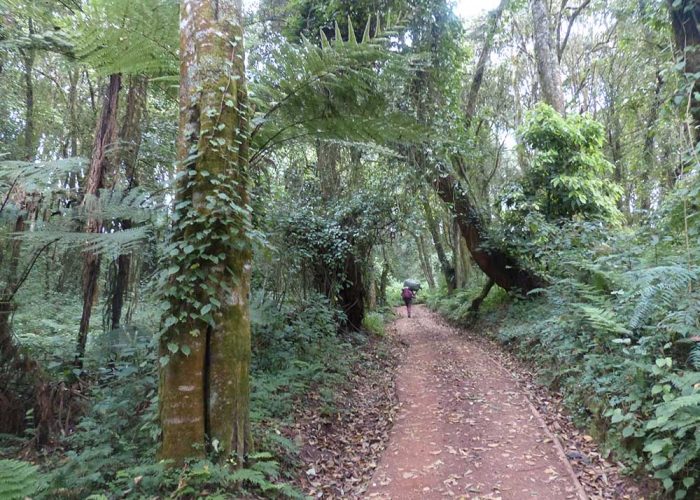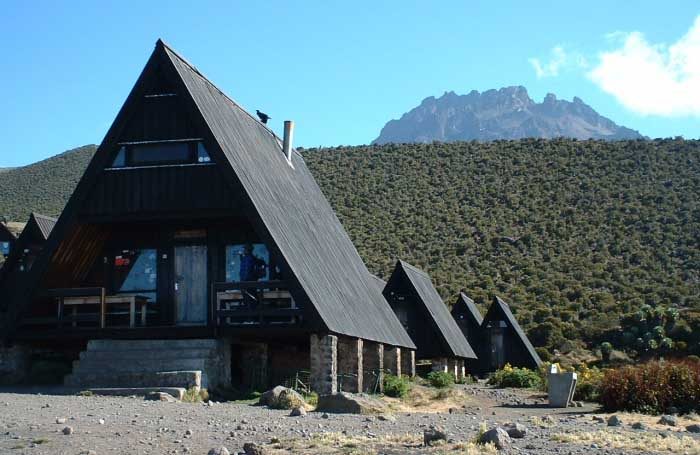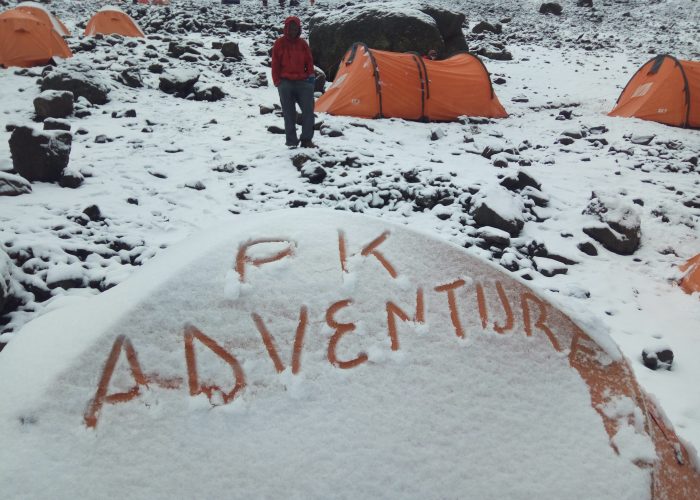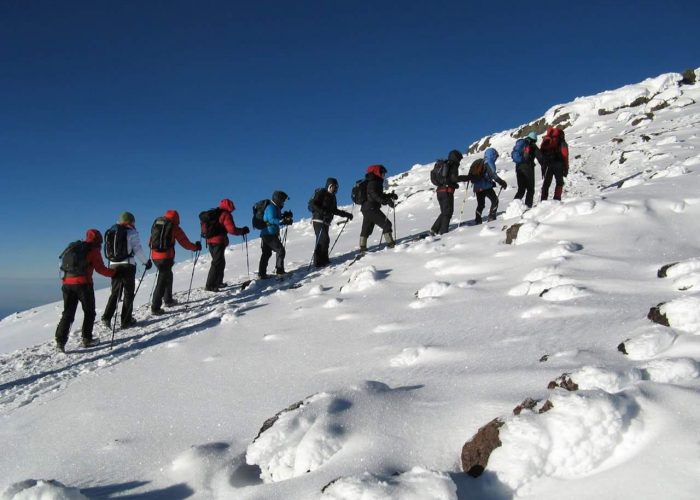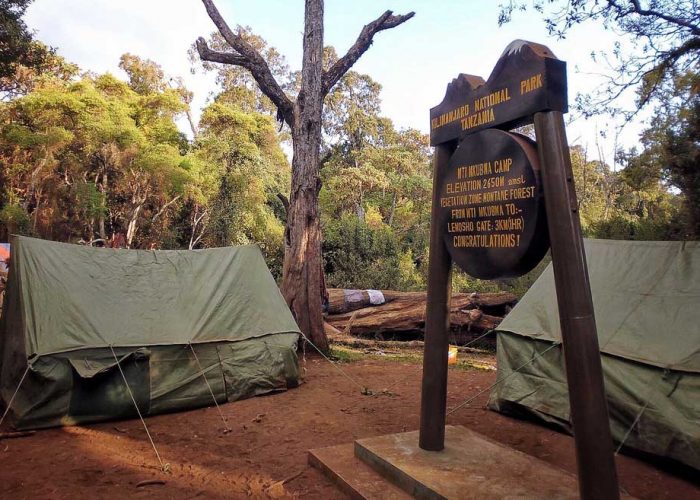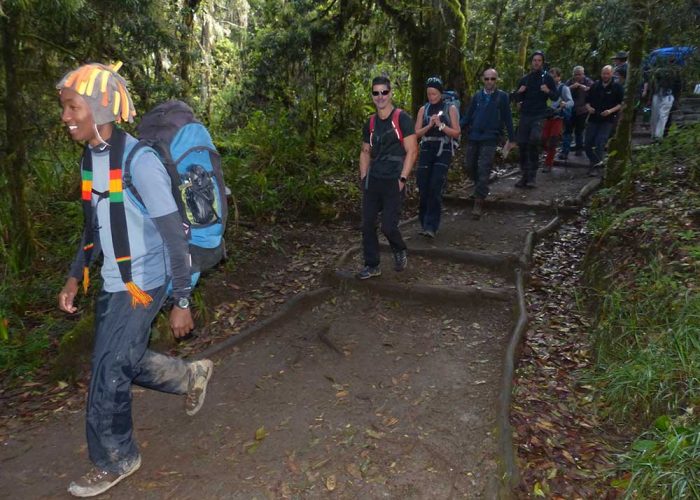Day 4: Summit Day! Kibo Huts (4,695 m/15,400 ft) to Uhuru Peak (5,895 m/19,340 ft) to Horombo Huts (3,690 m/12,100 ft)
- 4 km up, 14 km down
- 10-15 hours
- Alpine Desert
Wake at midnight to a light breakfast, and then prepare for your summit ascent. The goal is to climb before dawn so that you can reach Uhuru Peak shortly after sunrise. Leave at 1 a.m, switch back up steep scree or possibly snow, and reach Gilman’s Point on the crater rim at 5,861 m/18,640 ft. Here, views of the fabled crater and its icecaps greet you. Another hour of hiking along the crater rim near the celebrated snows takes you to Kilimanjaro’s true summit, Uhuru Peak, around 7 a.m. These times may vary according to how well you are adjusting to the altitude. This is Africa’s highest point, and you would have to travel more than 3,000 miles toward the Himalayas to find a higher peak! Be sure to have your picture taken at the summit to show your friends. You won’t stay at the summit long, you still have a long day ahead of you. After taking in the success, we descend back to the Kibo Huts, have lunch, rest, collect our things, and re-cross the saddle to the Horombo Huts. Eat dinner and get some well-deserved sleep! You do the beginning of this climb in the dark with headlamps or flashlights. It will be very cold until you start descending, so you will need all of your warm layers. This is, by far, the most difficult part of the trek. Slowly slowly, or, pole pole, an optimistic attitude, and determination will get you there!

